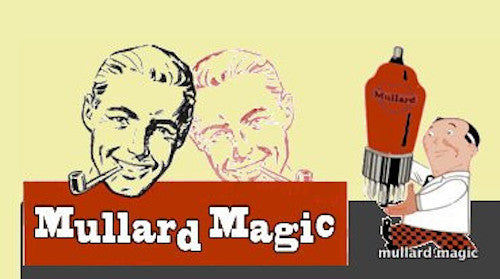
MULLARD FACTORY QUALITY CONTROL TESTING
Share
As well as the production testing we discussed in a recent blog entry, Mullard employed Quality Control (QC) testing where a sample of ten valves were taken at regular intervals and subjected to a range of tests. These tests differed from the production tests which were go/no-go type in that the QC tests were quantitative and the results were recorded using a series of Shewart Charts to individually log test characteristics both within a single batch and also inter batch.
The Shewart Chart is a time related plot which allowed trends in measurement to be monitored. The chart would have on it's y (vertical) axis two sets of bars - the first, the warning limit, the second, the specification limit. Corrective action would be taken if measurements approached the warning limit before the specification limit was exceeded and the valve product had to be scrapped.
Although some of the QC tests followed the 'Test 1' protocol, additional tests were also carried out. For indirectly heated valves, there was a test on heating time and for battery valves, a series of tests to indicate performance when HT & LT batteries run down. Inter-electrode capacitances were measured for all HF valves along with tests for input damping and equivalent noise resistance. For voltage amplifying valves (ie - audio ) measurement of gain was undertaken. For output valves, total harmonic distortion for a given output was measured and microphony tests were made when considered appropriate. Frequency changers were given a custom sequence of tests to measure conversion conductance and oscillator performance.
As you can imagine, this barrage of tests required custom built equipment which was designed and constructed in house and below, you can see a photo of a Mullard Blackburn microphony test station giving an EL37 a good seeing to: -

Another QC test was the Life Test where test valves were over - run for a 600 hour test and subjected to the 'Test 1' protocol at intervals throughout the test period.
The results of all of these various QC tests were produced at a weekly 'round table' where representatives from the Mullard departments of Production, Laboratories, Development and Technical Service could discuss the findings and as necessary recommend and implement minor modificatons in construction and manufacturing methodology to improve performance and hence correct undesirable trends.
